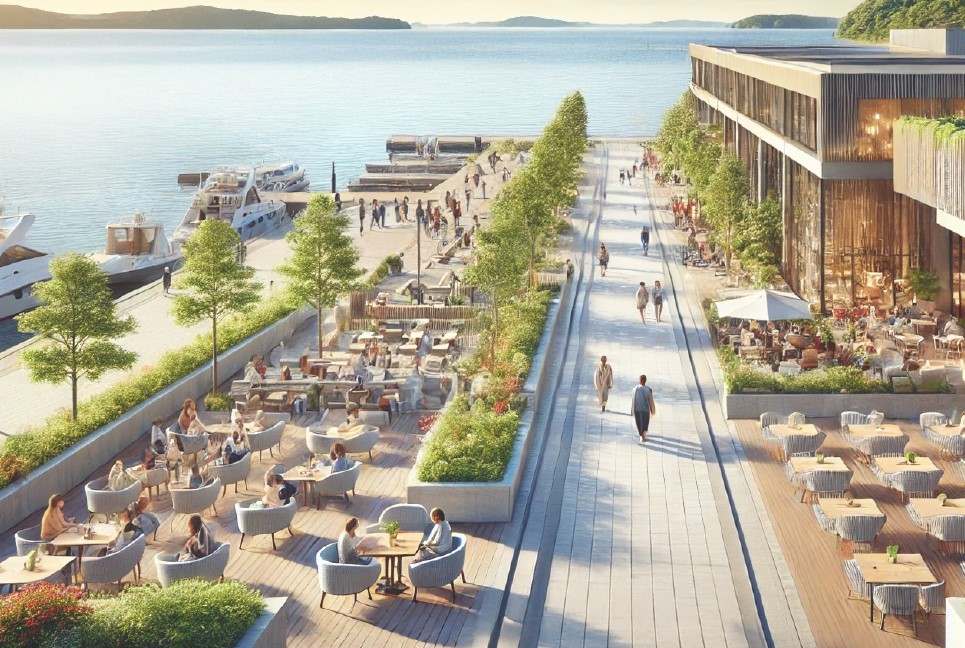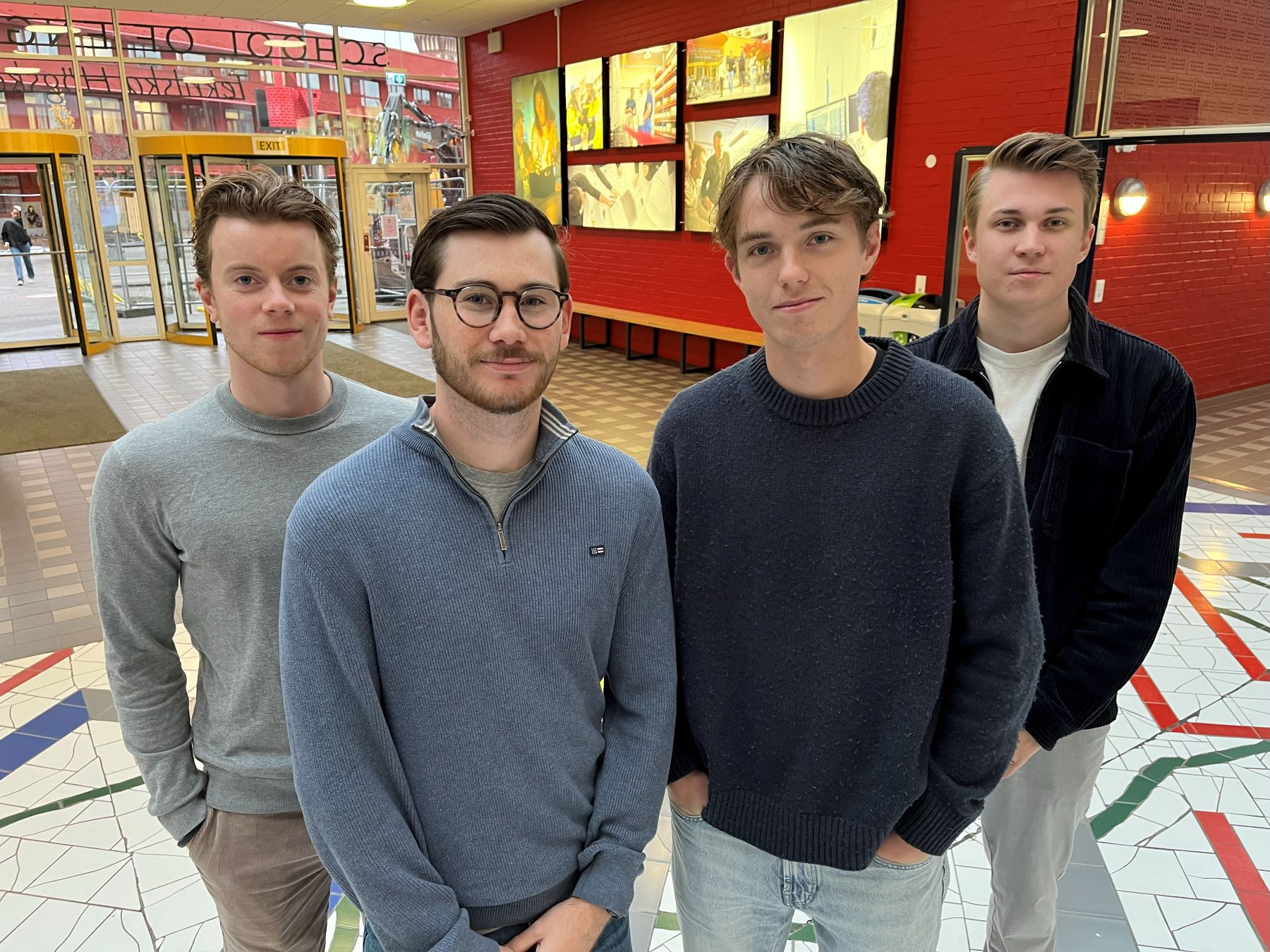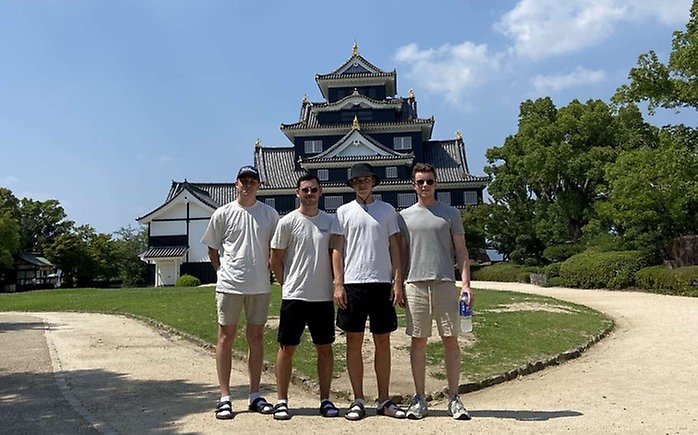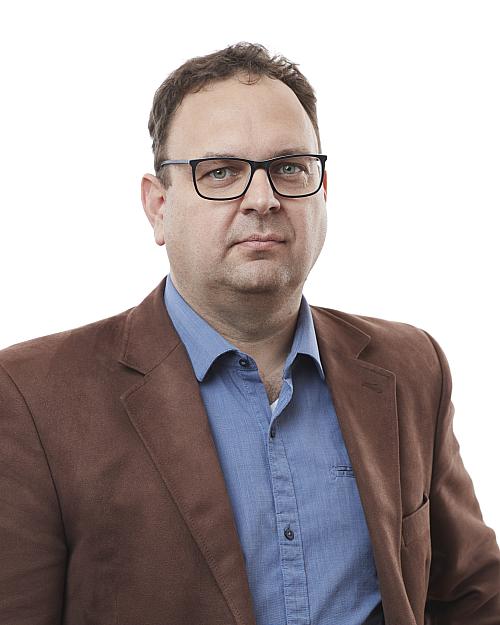
A sketch of the Uno Port area in the city of Tamano in southern Japan, created by four architecture students at the School of Engineering (JTH).
Students tasked with improving Japanese port
Four students at the School of Engineering (JTH), Jönköping University were tasked with developing design proposals for a port and railway area in the Okayama Prectural region in southern Japan. Then they visited Japan and presented their ideas.
"I've always dreamed of visiting Japan and then this opportunity came up!" says Gustav Göransson, who is studying Architectural Engineering at the School of Engineering (JTH) at Jönköping University and who was one of four students in the project.

Karl Hallén, Gustav Göransson, Måns Burén and Otto Asklund, who are all studying Architectural Engineering at JTH, participated in the project.
Géza Fischl, Senior Lecturer in Architecture at JTH and the students' course teacher, is the person behind the project. He has had several collaborations with Okayama Prefectural University of Art and Design (OPU). This time, the task was to solve how to make boat and train passengers stay longer in the Uno Port and Uno Station in the city Tamano, instead of just passing through it. The proposals would also promote accessibility, functionality and social sustainability.
"Based on European thinking"
The students involved in the project were Karl Hallén, Gustav Göransson, Måns Burén and Otto Asklund from the JTH programme in Architectural Engineering at the School of Engineering. The students mapped out squares, parks and new attractions in the area to make it livelier. They used mapping services such as Google Maps and finalized the sketches before leaving for Japan.
"One of our proposals was to build a public building with a restaurant and café near the ferry terminal. We started from a European mindset, but when we got there, we realized that we had thought a little wrong and had to adapt our proposals more to Japanese design and function," says student Otto Asklund.
One idea that the JTH students had to rethink was to have a restaurant by the water, which is common in Sweden but did not fit naturally into the Japanese environment. They also visited Okayama Prefectural University of Art and Design to discuss and refine their ideas about the port and railway area with architecture students at the school.
Positive feedback
The JTH students say they received positive feedback on their proposals from Tamano representatives who thought they had several interesting ideas and that the sketches of the area were nice.
"They praised us for how we had worked with Japanese design and asked if we would continue with this project. We have other courses now but gave them our material in case they decide to go ahead with it," says Gustav.
The delegation from Tamano also said that they usually build houses on a slightly smaller scale and in wood rather than stone and concrete, partly because of the risk of earthquakes.
Japanese design
In addition to the students learning more about Japanese design, Géza Fischl believes the project has promoted intercultural dialogue both digitally and in person.
"The students worked well and learned a lot on site in Japan. They had to redo some of their work after visiting Uno Port and Uno Station in Tamano, which shows the limitations of services like Google Maps. They got good help from the architecture students in Okayama Prefectural University and achieved great results," says Geza Fischl.
Reminiscent of American campuses
The JTH students found it very enjoyable and see it as a good experience to have worked on a real project in another country together with domestic officials and students. They point out that the Okayama Prefectural University campus was very large and reminiscent of American university campuses with manicured lawns between grand buildings. Another thing they noticed was that the architecture students there seemed to work more individually than they do at JTH. The JTH students had a large part of their travel costs paid for by a scholarship from the Scandinavia-Japan Sasakawa Foundation.
"I want to see a lot more of Japan, so I will definitely go back there," says Gustav.

- Senior Lecturer Architecture
- School of Engineering
- geza.fischl@ju.se
- +46 36-10 1536



